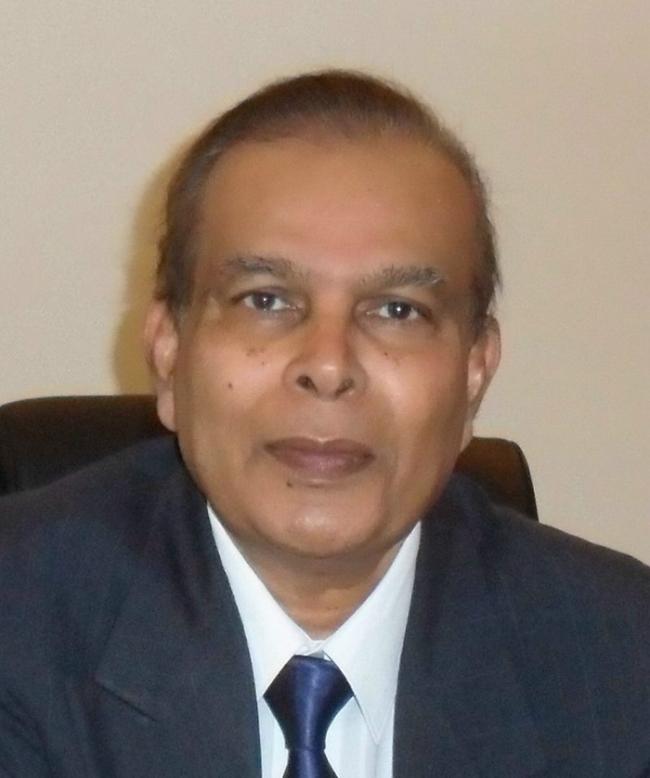While delivering the feature address at the La Primavera Banquet Hall in Ontario, Guyana’s President, Irfaan Ali announced the country’s plans to undergo a major transformation to build a “world-class service sector”. Addressing the misconception that Guyana should replicate the development strategies of other countries, he said: “What is wrong with us developing our own model? We must have the ability to design and propel our own brand. That is what is going to make us different.”
President Ali is indeed right, there is no “one-size-fits-all” model to develop an economy. However, as John C. Maxwell highlighted in “Leadership Gold: Lessons I’ve Learned from a Lifetime of Leading” a wise person learns from his mistakes. A wiser one learns from others’ mistakes. But the wisest person of all learns from others’ successes.”
It is important to have the knowledge of what did and didn’t work for others; and this series of research will point toward what Guyana can apply or avoid from other petrostates in its economic development journey.
The oil discovery in 2015 in Guyana marks the beginning of a new era for this country and its economy, which has a long history of battling poverty due to a lack of resources, combined with corruption resulting in weak infrastructure, education and healthcare system which led to a massive brain drain.
Resource wealth can be empowering at first but managing it to provide long-lasting prosperity is a daunting challenge for many developing countries, often failing to translate into economic growth and sustainable development. Even though Guyana has already surpassed by production its more oil-experienced neighbours, Trinidad & Tobago and Suriname, according to 2022 data; there are some lessons to learn.
The twin-island state of Trinidad and Tobago (T&T,) has long been the Caribbean’s largest oil and gas producer, with over 100 years of oil exploration and production history beginning in 1908.
The Dutch disease
By 1938, the colony shifted from being a sugar supplier to becoming a major petroleum supplier of the British Empire, covering some 38% of its oil needs. Employment in the oil industry grew from 801 persons in 1912 to 15,000 in 1944. Workers left the agriculture industry to seek employment in the oil sector. Revenues from oil export became sufficiently strong that the industry, although only employing about 5% of the workforce, surpassed decisively the contribution of the entire agricultural sector to gross national product (GNP).
This represents a common scenario, when the rise of one industry depletes the other ones of the workforce, due to its increasing employment demand and higher wages. Trinidad had fallen prey to the famous resource curse and, in its failure to diversify its economy, contracted the “Dutch disease” with the dysfunction of an underperforming agricultural sector.
Similar to T&T, Guyana, once the largest sugar producer in the Caribbean Community (producing around 395k tons of sugar) has been experiencing a continuous fall reaching the lowest level of 53,000 metric tons in 2022. The sugar industry collapse has been caused by several factors such as the nationalisation of the industry (back in the 1970s) which brought high production costs, lack of scale, corruption, and profit-sharing issues among workers. However, the oil discoveries in 2015 induced the government into thinking that this economy-supporting industry was non-viable any longer and in 2017 four of the sugar estates were closed. This was an act that “threw approximately 7,000 workers on the breadline and destroyed thousands of small and micro businesses connected to the sugar industry.”
While it appeared that the T&T sugar industry story might repeat in Guyana, there is new hope for it to become sweet again. The government is now taking steps to rejuvenate the sugar industry by reopening three of the four sugar estates that were closed by the previous Government Coalition and by injecting US$23 million from the Government’s new budgetary measures into The Guyana Sugar Corporation Inc (GuySuCo).
Economic diversification
In 1969, T&T made a move by forming its National Petroleum Company, followed by major acquisitions of local operations and assets of several major foreign oil players. “Black was never more beautiful” proclaimed Eric Williams, prime minister of T&T in 1974 in the wake of his government’s purchase of an oil refinery and other assets from Shell Trinidad Ltd. This wave of acquisition and nationalisation of petroleum operations and assets was happening in parallel with Trinis experiencing their first oil boom (1973-1984), accumulating US$10 billion in revenues. Eric Williams at one point declared that “money was not a problem”. The problem became how to manage and distribute the new wealth on behalf of the entire population.
In the first years, the government’s spending was careful and conservative, but over the next years, it grew over 14 times ranging from savings to new acquisition of assets, to subsidies and to employment. The government did establish a Sovereign Wealth Fund in 1999 serving as an Interim Revenue Stabilisation Fund for rainy days, changed the name in 2007 to Heritage and Stabilisation Fund which by 2009 grew to US$2.6 billion or 17% of all revenues collected. Guyana is well ahead in following this wise strategy and opened its Natural Resource Fund in 2019 at the beginning of production. The fund hit US$1.42 billion from oil revenue by the end of 2022, according to Guyana’s Central Bank.
Important to notice is that T&T’s government shift of strategy towards economic diversification was both late, and overly state-managed. The government bought outright about 40 companies. These new state-owned companies along with their acquisition brought huge financial mismanagement and corruption. By 1986, with the oil prices collapse, Trinidad felt the consequences of its lavish spending.
One of the best diversification decisions was to exploit its abundant gas reserves and expand the economy into petrochemicals, like ammonia and methanol. The gas industry was the one that resuscitated the T&T economy in the 90s, bringing a new wave of wealth between 1999 and 2008 (US$102.6 billion in taxes out of total gas revenues of US$225 billion generated between 2001-2008 alone). In 2021, T&T exported US$1.74 billion in ammonia, the most exported product in the country and places the nation as the second largest exporter of ammonia in the world.
Corruption
T&T’s oil production has been declining for the past years, reaching its lowest point of an average output of 58,450 bpd in 2022 from a peak of around 183,000 bpd back in the 70s and 80s. It is worth mentioning that the current structure of the fiscal regime in T&T made things worse for oil. The way royalties (on oil and gas) and supplemental petroleum taxes (on oil) are calculated makes it extremely difficult for oil investors and companies to be profitable after tax at prices in the US$50 range.
Another major hit to the oil industry and economy was in 2018 with Petrotrin’s closure of the country’s largest refinery, after 101 years in operation, due to an oil scandal and an estimated “whopping US$13 billion” in debt. Lack of transparency and poor management, along with low productivity, escalating manpower costs, and steadily increasing operational and capital costs, due to inadequate controls, questionable management practices, aging assets, and infrastructure, caused an economic crash.
Chairman of the Trinidad and Tobago Transparency Institute (TTI), Dion Abdool in 2018 urged Guyanese to learn from his country’s mistakes saying, “they must insist on transparency and accountability in the reporting of the revenue so that there can be no “tax leakage”.
Overall, excessive government subsidies on a wide range of consumer products pointed to a major shift of government expenditures towards undisciplined consumption. T&T’s strategy to expand and diversify its economy had a good motivation at heart, but it proved that not all types of investments and diversification are beneficial for a sustainable economy.
As Guyana is stepping into “the garden of Eden” similar to what T&T experienced, and is expected to receive US$157 billion by 2040 from oil revenue, according to Rystad Energy. The question arising is: will the Guyanese be able to learn from their neighbor’s good and bad decisions?
Cristina Caus is an International Economist and Oil and Gas/Energy Consultant and Business Developer. She has a rich, over a decade experience in the oil & gas industry worldwide and holds a master’s degree in international business from FIU.






